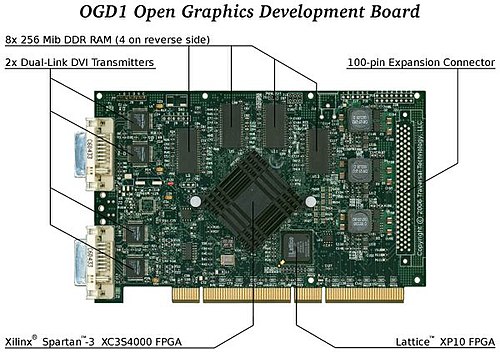This article needs to be updated.(February 2011) |
| Open Graphics Project | |
|---|---|
| Commercial? | Yes |
| Type of project | Open hardware |
| Website | wiki.opengraphics.org at the Wayback Machine (archived June 9, 2010) |

The Open Graphics Project (OGP) was founded with the goal to design an open-source hardware / open architecture and standard for graphics cards, primarily targeting free software / open-source operating systems. The project created a reprogrammable development and prototyping board and had aimed to eventually produce a full-featured and competitive end-user graphics card.

